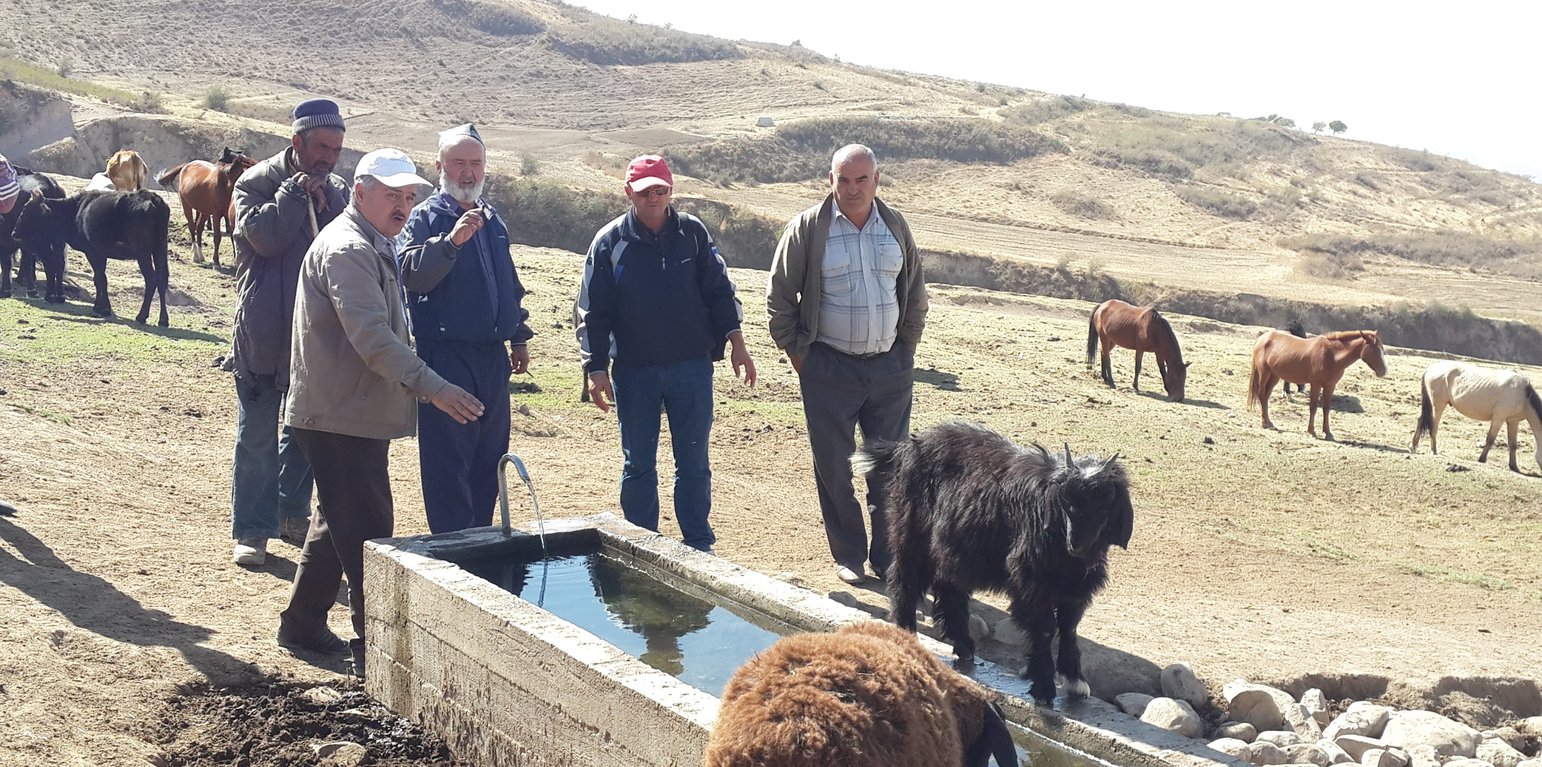



Bringing water from springs or other sources to water points in pastures greatly increases livestock productivity and improves reproductive performance. Difficult and distant access to water exhausts the animals, reducing production of meat and milk and reproductive capacities by up to 50%.
By providing water points in pastures, negative effects on livestock productivity can be reduced to a minimum. In order to implement the technology, water sources with perennial flow have to be identified with the shortest possible distance to and from the different grazing grounds. As a next step, in Tajikistan, water and land ownership and user rights must be regulated. Rights to pasture users are either given by the community or individual land and water owners. If the water source and a location for construction are found within a reasonable distance of the different pasture grounds, a drinking water system for livestock can be designed and constructed. Construction involves spring water collection , laying of pipes
and finally installation of the water point. Besides the direct benefits (i.e. increased productivity and reproduction), the water points in the pastures reduce erosion from cattle tracks in often critical locations such as steep slopes surrounding springs. Water points also protect springs from being destroyed or spoiled by the animals. Thus the technology has a risk reduction benefit. A potential negative effect of the technology is a reduction of biodiversity, as extracting water from catchment springs may result in fewer natural fauna and flora in the micro-environments around the springs.
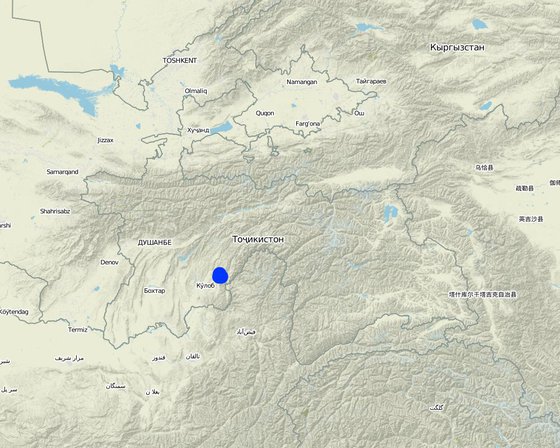
Location: Muminabad, Dehbaland, Khatlon, Tajikistan
No. of Technology sites analysed: 10-100 sites
Spread of the Technology: applied at specific points/ concentrated on a small area
In a permanently protected area?:
Date of implementation: 2014
Type of introduction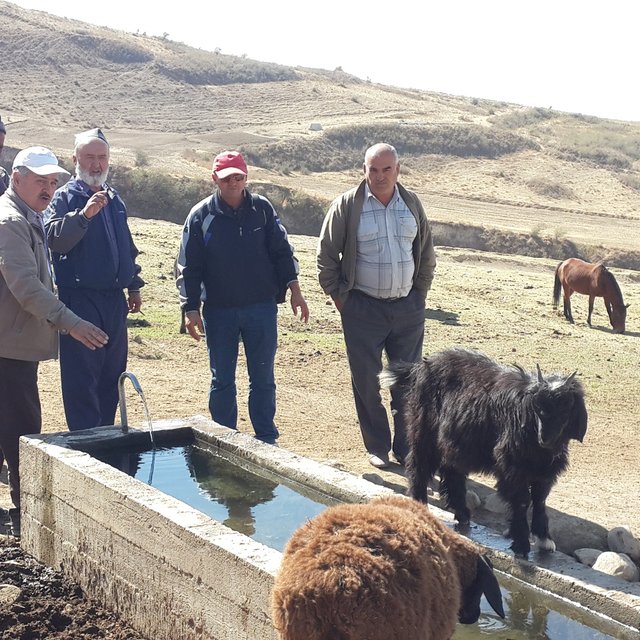
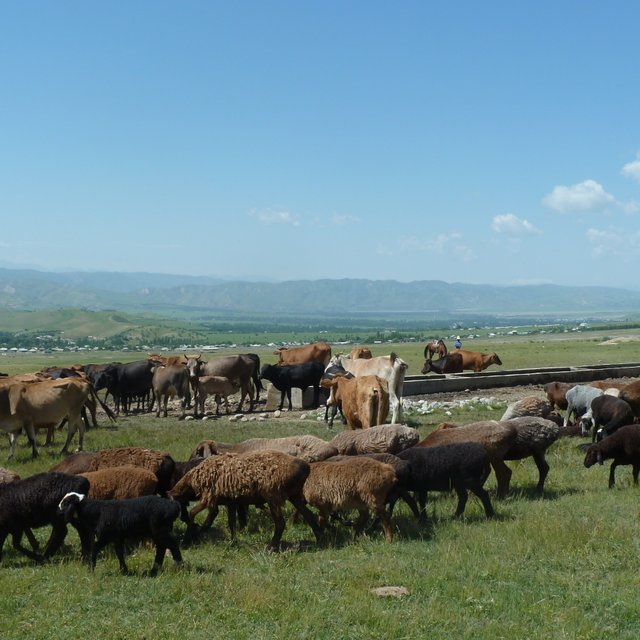


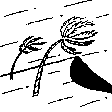


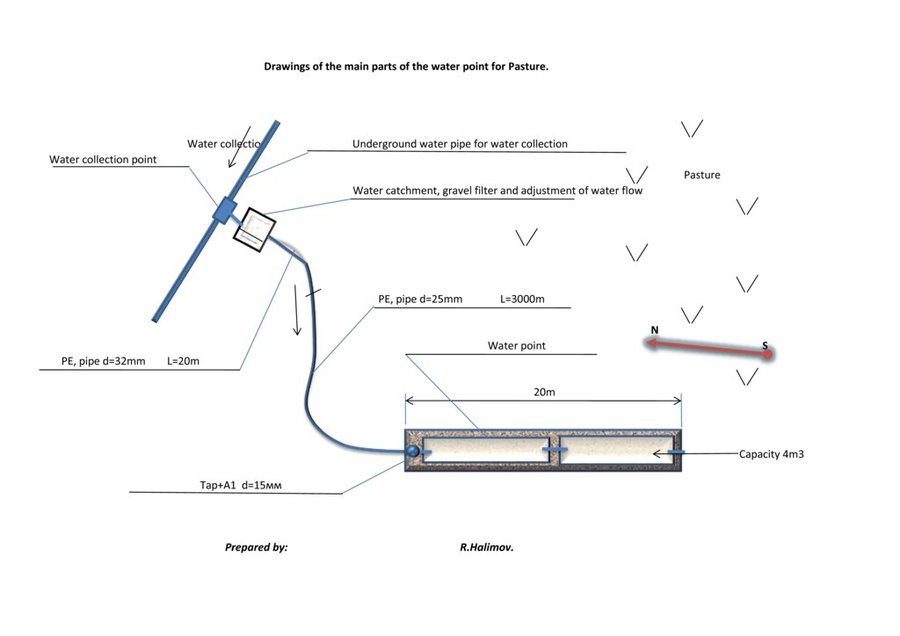
| Specify input | Unit | Quantity | Costs per Unit (Tajik Somoni) | Total costs per input (Tajik Somoni) | % of costs borne by land users |
| Labour | |||||
| Labour | person/days | 77.0 | 45.0 | 3465.0 | 20.0 |
| Equipment | |||||
| Material Transport Dushanbe-Muminabad | trips (truck with diver) | 1.0 | 3050.0 | 3050.0 | |
| Transport in the district Center to construction place | trips (truck with driver) | 3.0 | 150.0 | 450.0 | |
| Plant material | |||||
| Tubes | m | 1820.0 | 4.0 | 7280.0 | |
| Cement | kg | 1800.0 | 1.06 | 1908.0 | |
| Gravel | m3 | 6.0 | 180.0 | 1080.0 | |
| Construction material | |||||
| Tubes | m | 1820.0 | 4.0 | 7280.0 | |
| Cement | kg | 1800.0 | 1.06 | 1908.0 | |
| Gravel | m3 | 6.0 | 180.0 | 1080.0 | |
| Total costs for establishment of the Technology | 27'501.0 | ||||
| Total costs for establishment of the Technology in USD | 3'437.63 | ||||
| Specify input | Unit | Quantity | Costs per Unit (Tajik Somoni) | Total costs per input (Tajik Somoni) | % of costs borne by land users |
| Labour | |||||
| Clean outlet of water point to reduce erosion | days | 2.0 | 45.0 | 90.0 | |
| Control spring catchment (illegal cutting of trees, any other changes in vegetation to assess output of spring) and line | days | 2.0 | 45.0 | 90.0 | |
| Control water line - walk along the tubes and control for leackeges) | days | 1.0 | 45.0 | 45.0 | |
| Equipment | |||||
| showel | item | 1.0 | 150.0 | 150.0 | |
| Construction material | |||||
| Water Tab | item | 1.0 | 500.0 | 500.0 | 100.0 |
| Gravel bed around water point | kg | 20.0 | 20.0 | 400.0 | |
| Replacement of tubes | m | 200.0 | 4.0 | 800.0 | |
| Total costs for maintenance of the Technology | 2'075.0 | ||||
| Total costs for maintenance of the Technology in USD | 259.38 | ||||
Quantity before SLM: 0
Quantity after SLM: 50%
more meat, milk (avarage 1 l before, after 3 liter) and higher productivity (every second year, now every year)
Quantity before SLM: 0
Quantity after SLM: permanently availible
There is no water availible before the intervention in the pasture area, but animals need to walk for several km to reach water down in the valley or even back at the villages
Animals have access to improved water quality (i.e. tab water).
Quantity before SLM: None
Quantity after SLM: 30% increase
Animals are healthier. Farmers have more milk and meat due to improved access to water and less movement during the day.
Work for herders got easier, as they have to walk less with the animals to find water.
Negative side effect, as water beyond the need of animals runs off unused.
Erosion reduced due to improved land cover as anmials do not go into spring atchments. Reduced movements of animals reduce as well trampling and loss of vegetation cover in watershed areas.
Tabbed water remains accesible in droughts.